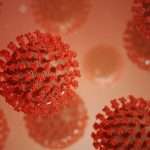Exceptions from the rule on quarantine remain the same as in the previous protocols, the HZJZ said in a summary of the new protocols, published on its website.
Persons with an asymptomatic infection may end their isolation if on the fifth day at the earliest they test negative on a rapid antigen test, as may patients with mild and moderate symptoms after at least five days, on the condition they test negative on a rapid antigen test on the fifth day at the earliest, their temperature is not elevated and they have significantly reduced symptoms.
Without a rapid antigen test, isolation lasts ten days for persons who have not been vaccinated and have not contracted the infection earlier, while for those who have been vaccinated and have recovered from COVID-19 isolation lasts seven days without a test. To end isolation without a test, a patient must not have an elevated body temperature for at least 24 hours, as against the previous rule of a minimum three days.
If the patient and their close contacts share the same household where they do not have the possibility of isolating the patient, household contacts have to quarantine for seven days after the patient meets the conditions for the completion of isolation.
A person with an asymptomatic infection may end their isolation five days at the earliest after testing positive, if they test negative using a rapid antigen test done on the fifth day of isolation at the earliest. After that, they have to wear a mask for the next five days when in contact with other persons, limit contact with persons at risk of a serious disease and comply with other epidemiological rules.
If the rapid antigen test done on the fifth day since the start of isolation at the earliest is positive, the person concerned can end isolation after seven days if they have been vaccinated or have recovered from COVID-19, or after ten days if they have not been vaccinated and have not recovered, without having to test again.











